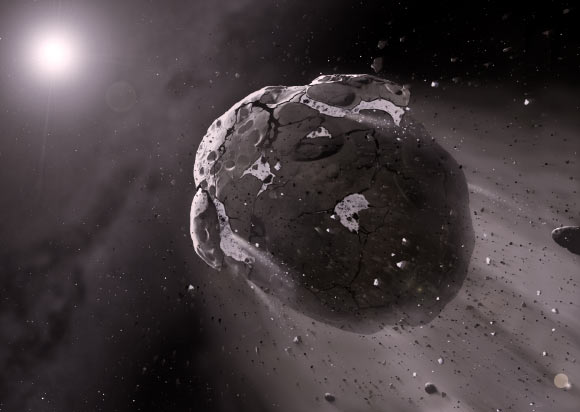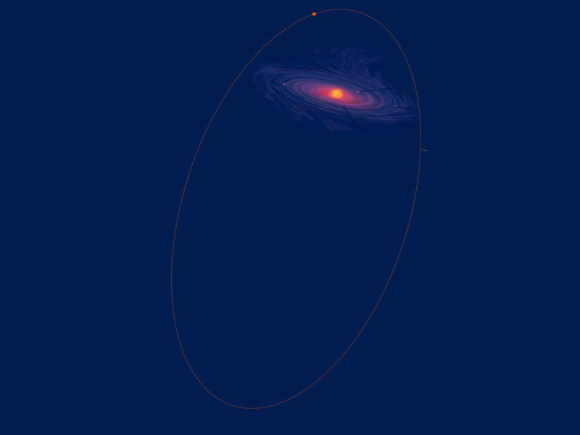High-Inclination Centaur Asteroids Came from Interstellar Space: Study | Astronomy – Sci-News.com
At least 17 high-inclination Centaurs and two trans-Neptunian objects were captured by the Solar System from the interstellar medium, according to a new study published in the Monthly Notices of the Royal Astronomical Society.

An artist’s impression of a rocky asteroid. Image credit: Mark A. Garlick, Space-art.co.uk / University of Warwick / University of Cambridge.
Centaurs are outer asteroids whose orbits are mostly confined between those of Jupiter and Neptune.
Due to giant planets’ perturbations, these objects have transient orbits with typical lifetimes of a few million years. If a Centaur orbit is integrated forward or backward in time, it will invariably either hit the Sun, the planets, or be ejected from the Solar System.
Centaurs appear to be intermediate between asteroids and comets, as any Centaur coming close enough to the Sun is expected to show cometary activity.
In the new study, Dr. Fathi Namouni from the Université Côte d’Azur in France and Dr. Helena Morais from the Universidade Estadual Paulista in Brasil examined 17 high-inclination Centaurs and two trans-Neptunian objects, 2008 KV42 and 2011 KT19.
“In this work, we study the possible origins of high-inclination Centaurs and independently test whether they originate from the flat planetesimal disk of the conventional theory of the formation of the Solar System,” the astronomers said.

The orbit of a Centaur asteroid 4.5 billion years ago, relative to the protoplanetary disk. Image credit: Namouni & Morais / NASA.
The team ran computer simulations to trace the location of these objects right back to the birth of the Solar System.
“Current orbits and characteristics of these objects can only be explained if were not in our Solar System at its birth, 4.5 billion years ago,” the authors said.
“The objects in our Solar System already orbited the Sun 4.5 billion years ago in the same plane as the dust and gas disk in which they were formed. However, these 19 objects were not part of this disk.”
“Our simulations show not only that these Centaurs orbit the Sun on a plane perpendicular to planetary motion at that time, but also that they were located far from the disk that gave rise to solar system asteroids. These 19 asteroids were not part of the Solar System when it was born.”
“Stellar proximity in the Sun’s birth cluster gave rise to strong gravitational interactions that allowed stellar systems to capture asteroids from one another.”
_____
F. Namouni & M.H.M. Morais. 2020. An interstellar origin for high-inclination Centaurs. MNRAS 494 (2): 2191-2199; doi: 10.1093/mnras/staa712






